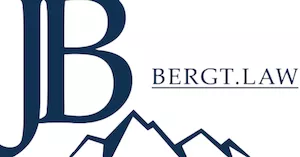Introduction
In the intricate landscape of financial markets, the operation of multilateral trading facility (MTF) holds a significant position, which is the private law equivalent of a public stock exchange or regulated market. This article aims to dissect the legal definition and operational nuances of an MTF, providing insight into the mechanisms that facilitate the interaction of multiple interests in the buying and selling of financial instruments within a regulated framework, leading to contractual agreements.
The Essence of Multilateral Trading Facilities
The operation of a multilateral trading system is defined as the management of a system that brings together the interests of numerous parties in the buying and selling of financial instruments within a system, culminating in a contract for the purchase of these instruments. This definition encapsulates several key elements:
- Multilateral System: This refers to an objective set of rules governing membership, the initiation of trading in financial instruments, trading among members, reporting of completed transactions, and transparency obligations. A technical trading platform is not a prerequisite.
- Interest in Buying and Selling Financial Instruments: The term 'interest' is broadly interpreted to include expressions of interest, orders, and price offers. Financial instruments, as legally defined in MiFID II, encompass a wide range of securities (equity and debt) and derivatives.
- Multiple Participants: The system does not require a mandate for individual transaction brokerage, emphasizing the involvement of multiple parties.
Operational Framework of Multilateral Trading Systems
The operation of a multilateral trading system involves several critical processes:
- Bringing Together Interests: The system must bring together interests according to non-discretionary, pre-established rules, ensuring that transactions are matched strictly according to market regulations. The actual execution of contracts, whether within or outside the system, is irrelevant.
- Active Listing Systems: Systems where participants post binding offers that others can access directly within the system under fixed terms, resulting in a contract, also fall under the definition of a multilateral trading system.
Regulatory Aspects of Multilateral Systems
Operating multilateral systems as defined in Art. 4 Para. 1 No. 19 of Directive 2014/65/EU (MiFID II) requires a license for operating an MTF, unless a license for an organized trading facility (OTF) or a regulated market as per Art. 4 Para. 1 No. 21 of MiFID II is applicable. This stems from Art. 1 Para. 7 of MiFID II, mandating that all multilateral systems for financial instruments must operate in accordance with the provisions of either Title II for MTFs/OTFs or Title III for regulated markets.
According to the interpretation by the European Securities and Markets Authority (ESMA), as per the ESMA Opinion dated 02.02.2023 (ESMA70-156-6383 Final Report on ESMA's Opinion on the trading venue perimeter), a multilateral system exists when two trading interests in financial instruments interact on a platform or system operated by a third party. This includes platforms where communication about the price and quantity of financial instruments occurs, and the actual contractual agreement for buying or selling financial instruments takes place bilaterally outside the platform.
The DLT Pilot Regime: A Paradigm Shift in Financial Markets
The advent of Distributed Ledger Technology (DLT) and its integration into financial markets, particularly in the context of multilateral trading systems (MTS), marks a significant evolution in the financial services sector. The DLT Pilot Regime, introduced by the European Union, is designed to foster innovation in financial services by allowing market participants to use DLT within a regulated environment. This regime aims to provide a testing ground for DLT applications in securities trading, settlement, and custody, offering insights into the potential benefits and challenges of this technology in the financial sector.
DLT can significantly improve the efficiency of MTF by streamlining transaction processes, enhancing transparency, and reducing counterparty risks. MTF operators utilizing DLT must ensure compliance with the existing regulatory framework, particularly concerning market integrity, investor protection, and systemic risk management.
The DLT Pilot Regime paves the way for innovative applications of DLT in financial markets, potentially transforming the landscape of MTF and other trading venues. This development necessitates ongoing dialogue between regulators, market participants, and technology providers to balance innovation with regulatory compliance and market stability.
Source: ESMA70-156-6383 Final Report on ESMA's Opinion on the trading venue perimeter; BaFin Factsheet Operation of a multilateral trading facility
Executive Summary:
- Definition and Operation of MTF:MTFs involve a system that unites multiple interests in the buying and selling of financial instruments, leading to contractual agreements.
- Regulatory Framework: The operation of MTf requires adherence to specific rules and regulations, ensuring a structured and transparent trading environment.
- ESMA's Interpretation: ESMA's interpretation broadens the scope of MTF to include platforms facilitating communication about financial instruments, even if the actual contract execution occurs outside the platform.
- Licensing Requirements: Operating an MTF requires a specific license under MiFID II, with stringent compliance to either MTF or OTF regulations, depending on the nature of the system.
- The DLT Pilot Regime offers a framework for integrating DLT into MTFs, enhancing efficiency and transparency while ensuring regulatory compliance.
The content of this article is intended to provide a general guide to the subject matter. Specialist advice should be sought about your specific circumstances.

